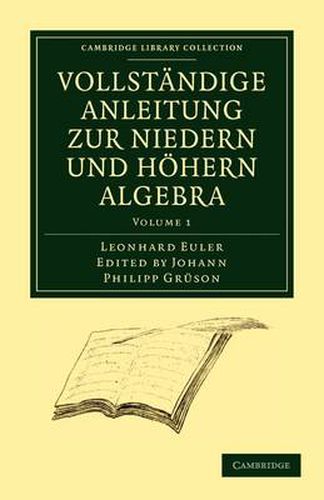Readings Newsletter
Become a Readings Member to make your shopping experience even easier.
Sign in or sign up for free!
You’re not far away from qualifying for FREE standard shipping within Australia
You’ve qualified for FREE standard shipping within Australia
The cart is loading…






In 1770, one of the founders of pure mathematics, Leonard Euler (1707-1783), published an algebra textbook for students. It was soon translated into French, with notes and additions by Joseph-Louis Lagrange, another giant of eighteenth-century mathematics, and the French edition was used as the basis of the English edition of 1822 (which also appears in this series), and of this 1790s German edition by Johann Philipp Gruson, Professor of Mathematics to the royal cadets. Volume 1 begins with elementary mathematics of determinate quantities and includes four sections on simple calculations (addition, subtraction, division, multiplication), and progresses to compound calculations (fractions), ratios and proportions. This landmark book showed students the beauty of mathematics, and more significantly, how to do it. It provides tangible evidence of the lively and international mathematical community that flourished despite the political uncertainties of the late eighteenth century.
$9.00 standard shipping within Australia
FREE standard shipping within Australia for orders over $100.00
Express & International shipping calculated at checkout
In 1770, one of the founders of pure mathematics, Leonard Euler (1707-1783), published an algebra textbook for students. It was soon translated into French, with notes and additions by Joseph-Louis Lagrange, another giant of eighteenth-century mathematics, and the French edition was used as the basis of the English edition of 1822 (which also appears in this series), and of this 1790s German edition by Johann Philipp Gruson, Professor of Mathematics to the royal cadets. Volume 1 begins with elementary mathematics of determinate quantities and includes four sections on simple calculations (addition, subtraction, division, multiplication), and progresses to compound calculations (fractions), ratios and proportions. This landmark book showed students the beauty of mathematics, and more significantly, how to do it. It provides tangible evidence of the lively and international mathematical community that flourished despite the political uncertainties of the late eighteenth century.